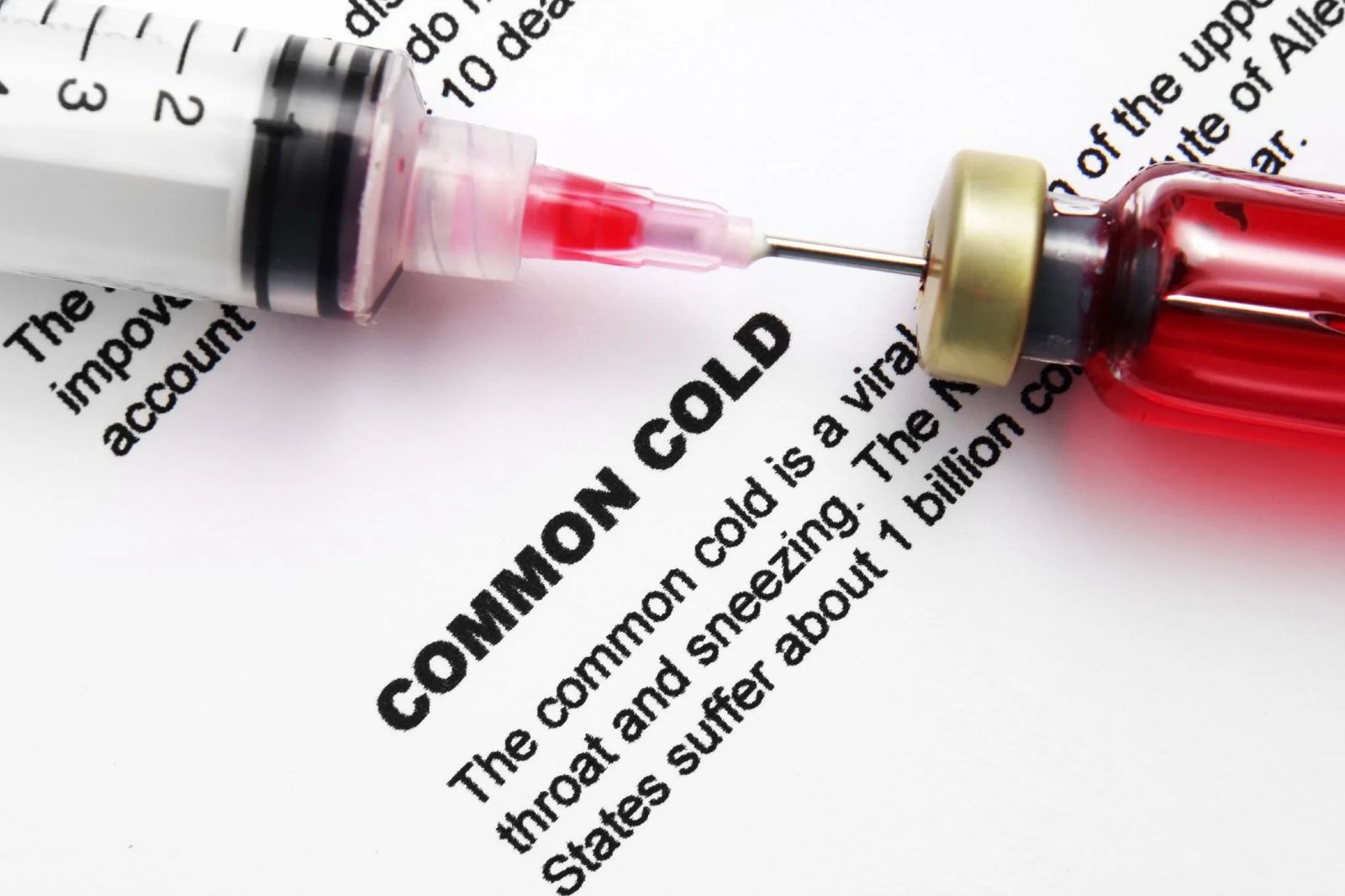
Keeping Colds & The Flu Away!
Don't let germs, bacteria and viruses get the best of your house this season!
Germs, unseen by the naked eye, lurk in and around surfaces in our homes, our grocery carts, our remotes, our bedding, our friends and we could go on. That's why we are talking about everything bacteria. From known and unknown places germs creep, to what to look for in a cleaning product, to identifying how likely you are to catch an illness from certain objects, we present to you a holiday germ guide that might make you see these invisible microorganisms a little more clearly.
IN THE HOME
Homes are often filled with bacteria. Yet, in one recent study, only 5% of partakers believed that the home is where children are mostly likely to contract illness.
Becky Wolfe, RN, Infection Prevention and Control Coordinator at St. Vincent Healthcare, explains, “The home can be just as infectious as outside of it, especially during flu season.”
Although places such as toilet bowls and kitchen counters fit our normal idea of filthy, it’s often the smaller, more used items where we are mostly likely to contract illness. Common places where germs lurk are on high-touch areas, Wolfe explains. High-touch areas are places and items we are prone to touching a multitude of times by different people, often forgetting to clean or sanitize them. The remote control, game controllers, door handles and telephones are often overlooked. And if someone in the house is already ill, germs can thrive on these inanimate objects for anywhere from a few minutes up to 48 hours. The virus known as the Norovirus is a little stealthier. It can survive on a surface for up to 12 days.
Even items we use to clean, such as a dish sponge, carries approximately 134,360 bacteria per square inch. That's almost eight times as much bacteria as a bathtub, averaging only 17,964 bacteria per square inch. Keep in mind, we aren’t using the bathtub to clean our dishes and counters.
Nancy Iversen, RN, Infection Control Practitioner at Billings Clinic, suggests putting sponges in the dishwater after each use to help prevent the build-up of bacteria. Another quick cleaning fix is to throw them in the microwave and heat them on High for one minute. Zapping your sponges and plastic scrubbing pads can kill up to 99% of all bacteria, even the most troubling E. coli.
Sharing personal items is another way germs are easily spread. Even individual, separate items such as contact lenses build up a plethora of bacteria. Actually, contact lenses, Iversen explains, are “three times as likely to carry cold infections,” since unclean hands carry bacteria and then we directly contact our eye to insert the lens. Because of this, the Food and Drug Administration recommends washing and air drying your contact lens case after each use and never exposing the lenses to any type of water.
OUTSIDE OF THE HOME
Once we step outside our home, we are exposed to more people, more objects and yes, more germs. Our environment is no longer as controlled as it is in our home.
The bacteria E. coli loiters on shopping carts, salt and pepper shakers and even in after-dinner mint bowls in restaurants from those customers who forgot to wash their hands after using the bathroom, Iversen says. At our workspace, keyboards, telephones and light switches are among many other places germs live. And according to one study by Woman’s Day Magazine, ATMs and checkout credit card machines at some grocery stores can have up to 80% E. coli bacteria on them from those patrons who handle dripping meat packages or produce and then use the screen. The study showed that more E. coli was found on shopping carts than on toilet seats.
Okay, So Germs are Everywhere, Now What?
After reading these facts, it may seem that preventing illness may be impossible. Despite the fact that we live in a germ-filled world, there are ways to keep you and your family healthy.
For one, Iversen and Wolfe recommend keeping hands away from your mucus membranes, mainly your mouth and eyes. It's the best way to prevent infection. There are other pieces of advice like maintaining good hand-washing skills, getting enough sleep and exercise. “People need to keep themselves healthy,” Iversen says. “We don’t always know all of the reasons why we get sick, but you need to maintain your defenses.”
When it comes to cleaning products, Iversen and Wolfe both suggest being knowledgeable about the ingredients. For example, hand sanitizers should contain at least 60% alcohol to be effective. Also make sure your disinfectants are EPA registered because, as Iversen explains, “They have gone through a series of testing that, if used as directed, will kill the germs that are most worrisome for the home environment.”
You might have seen the word "Antibacterial" on all kinds of soaps, but Iversen believes consumers are oversold on the benefits. She says, “There’s little evidence that Triclosan (an ingredient in antibacterial soap) is any more effective than regular soap.”
As for the best cleaning solution, the FDA suggests one tablespoon of bleach to one quart of water. When cleaning agents aren’t in reach, tactics such as opening push doors with elbows or grabbing handles with tissues are two ways to prevent the spread of germs. If no such options exist, Iversen suggests keeping contaminated hands away from mucus membranes until you can find a disinfectant.
Good Germs vs. Bad Germs
There is a powerful misconception that all bacteria are harmful, infectious and overall bad for our health. But Wolfe speaks to the contrary.
“Illness is often publicized and health is not,” Wolfe says, “So, we assume that all bacteria are bad.”
But our bodies are full of bacterial cells, as Wolfe described, that live in our mouth, bowels, intestine, skin and a plethora of other places. According to the experts, bacteria cells exceed human cells by a ten to one ratio. What most don't realize is they are also there to fight other bacteria and viruses that are potentially harmful to our health. “Bacteria have functions and those functions actually keep us balanced and healthy," Iversen says. “We don’t want to eradicate all of those.”
Myth Busters: How likely are you to catch illness from these items?
Money: There is no denying that money is handled by a myriad of people with both clean and unclean hands. But the likelihood of catching an illness or an infection from it is slim. Dollars bills are made of porous fibers, which make the transfer of germs from the bills to your hands difficult. And, the possibility of the transfer of germs from coins is unlikely since nickel and copper have antimicrobial properties, meaning nickel and copper inhibit the growth of bacteria and germs.
Cutting Board: Bacterium like Salmonella thrives in raw meat products. One way to halt the spread of Salmonella in your household is to use designated cutting boards, Iversen says. Use one board for raw meats and another for bread, fruit and vegetables. It is necessary to keep cutting boards clean since they can transfer bacteria from one product to another.
Gym Equipment: A study from the Clinical Journal of Sports Medicine found that 73% of weight equipment and 51% of aerobic equipment were contaminated with the rhinovirus, a virus that causes the common cold. So when you’re using gym equipment be aware that you are not the first to use or touch the equipment. Avoid contact with mucus membranes and sanitize or wash hands before you leave.
If You're Healthy & You Know It, Wash your Hands!
A little lesson on the proper way to soap up
Using only water does not clean your hands, Iversen emphasizes. The proper, effective way to clean your hands is use a quarter-size amount of hand sanitizer or hand soap. Rub product on hands, back of hands, tips on fingers, between fingers and wrists. With hand sanitizer, repeat until it has completely dried. For soap, scrub hands for at least 20 seconds, or two durations of the “Happy Birthday” song.









